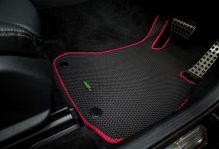Ford Ranger Exhausts – Your Complete Buying Guide
When it comes to expelling the gasses created by your vehicle’s engine, the most important part in the entire process is obviously the exhaust system. Most people don’t really consider its benefits and how they can make their ride perform better because they think their OEM one works just fine. While this may be true, there are always some good reasons to upgrade your car and boost its performance. Besides being able to enter beast mode, different upgrades also have various different benefits. Let’s talk details.
Benefits
• While OEM systems are made to muffle the sound as much as they can, aftermarket ones aren’t as restrictive when doing so. If you are not a fan of fine-tuning your vehicle’s roar, you can choose from the wide variety of Ford Ranger exhausts that will keep the noise down without taking away from your vehicle’s power.
• An aftermarket exhaust system can also reduce the backpressure of your Ranger which robs your engine of some power. The engine generates this power in order to push the gasses through the tailpipe, but with less-restrictive components, you can retrieve some of it back. This will add more HP to the engine and make it run better.
Parts
• The very first part of the exhaust formation are the headers (exhaust manifold), which are bolted to the engine’s cylinder heads and make sure that the exhaust gasses go through as easily as possible. They are usually made of steel or aluminium and come mandrel bent in order to allow the gasses to pass smoothly which helps reduce that power-robbing backpressure I just mentioned.
• Next in line is a small metal chamber called a ‘catalytic converter’ which filters out the pollutant gasses in order to lower the harmful emissions that your vehicle emits. The inside of this part is usually made of two honeycomb structures coated with various precious metals which cause a chemical reaction when they get in contact with the gasses. Catalytic converters often come with an oxygen sensor which measures the level of oxygen and helps improve fuel efficiency by sending that information to your vehicle’s computer.
• In the case of dual Ford Ranger exhausts, you’ll also get crossover pipes, which come in the shape of an X or H. These pipes help reduce the uneven exhaust flow that comes from the engine’s cylinders and also help reduce backpressure. The X shaped crossover pipes are better for high-end horsepower vehicles and the H shaped pipes are better for low-end torque.
• After the gasses have passed through the catalytic converter, they go through the resonator – the part that reduces the noise from the gasses passing through the pipes. Keep in mind that it is not the same as a muffler since this part is made to cancel out the sound waves from each other. A resonator is sometimes also called a ‘pre muffler’.
• Most Ford Ranger exhausts have a muffler in order to reduce the noise that comes from the resonator itself, which is an additional level of protection that makes sure the vehicle is as quiet as possible. A muffler can also have an effect on the exhaust tone itself, depending on the type of baffles, chambers and perforated tubes it has. A quality aftermarket muffler shouldn’t create a lot of backpressures when changing the exhaust tone.
• The tailpipe is the last part of the exhaust system, which is connected to the muffler and it is usually made from regular steel or stainless steel tubing. You can have it made with a chrome finish tip or a polished one so you can show off with your upgraded ride that has a touch of luxury.
How to Improve
• Exhaust Scavenging is a complicated yet very effective way to improve the performance of your Ranger. Exhaust scavenging happens when the vacuum created from the trailing of an exhaust pulse that comes from one engine cylinder is used to help pull out the exhaust pulse from the other cylinder. This is done by the exhaust manifold which merges the exhaust streams in order for this to happen. Many variables come into play here such as pipe size, bend radius, pipe length and so on, which is why it is so difficult to make it work.
• The material of Ford Ranger exhausts plays a major role in their durability, and materials like stainless steel and aluminized steel make them more corrosion-resistant. A free-flowing exhaust is what most gearheads will recommend you to go for since it will improve horsepower by up to 10 times. Test piping is also a great way to make your new system more efficient. Weigh your options and choose the best one for your situation.






